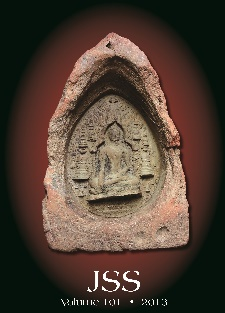Development of Traditional House Forms in Riparian Communities in Thailand
Main Article Content
Abstract
The distinctive qualities of traditional house forms in riparian communities in Thailand and other countries in Southeast Asia are being affected by the forces of modernisation. The transformation is determined mainly by the influence of communications changing from waterways to roads. The new houses tend to be built close to roads, as the road is a more convenient way of transportation and there is more available land than in the area along the waterside. Also, the diversification of house forms is related to the variety of more modern building materials and technologies and the influence of telecommunications and flow of population between rural and urban areas. This paper studies the nature of these changes based on a field study of two settlements on the Chao Phraya River Basin in Thailand. On-site measurements, observations and semi-structured interviews were used to trace the changes and reasons for them. A typology of house forms was developed. It was found that although there is much development and change, there is still a strong connection to some traditional features.


